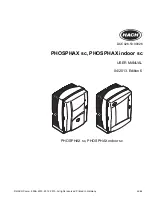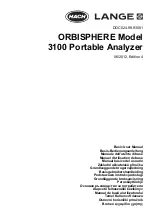
IM 12B6C2-E-H
1. What is automatic calibration?
Automatic calibration is the usual process of
calibrating a pH measuring loop with the aid
of two buffer solutions.
The first calibration is usually at pH 7; this is
to correct the asymmetry potential of sen-
sors (zero).
The second calibration is most commonly
made at pH 4. This corrects the slope of the
sensors (sensitivity) . After this two point cali-
bration the instrument is accurate to the
buffers used.
The EXA PH200 gives you the freedom to
use up to three buffer-solutions you want in
any sequence you like. The buffer solutions
can be programed in memory tables.
In the automatic calibration mode the instru-
ment prompts the operator for the re quired
buffer solution, checks the signal for stable
conditions and then calibrates. The new cali-
bration is then checked and a warning is
given if values are unacceptable.
During calibration the output will be frozen if
HOLD was activated.
2. How does it work?
A. The instrument asks for a buffer. Accept
or change
B. The sensor is immersed and checked for
stability
C. CAL.END, Stop or move on the second
calibration
D. Values acceptable or rejected.
E. After second calibration give YES to end
session.
NOTES:
1. It is not necessary to have the calibration
points within the measuring range of the
instrument, it is however advisable to do
so.
2. If no keys are pressed for 10 minutes
and the calibration was not finished the
instrument will return to measurement
with the old calibration values.
3. If HOLD was activated the instrument will
return to measurement after another 10
minutes.
Press YES to start the calibration. After sta-
bilization CAL.END will show. Press NO to
move on to pH 4.
3. Example
Standard calibration procedure.
Select AUT.CAL routine using MODE and
YES keys (enter pass code if necessary).
Select buffer pH 7using YES key.
Insert the rinsed sensors from the process
into a solution of pH 7.00 at 25°C.
CAL.END display on stable reading. Press
YES to end or NO to go on to next buffer.
Clean the sensor with water and insert into
buffer solution of pH 4.00 at 25°C.
CAL.END display on stable reading. Press
YES to end.
The whole process will not take more than
15 minutes and should be repeated at least
once every 2 months or whenever the EXA
PH200 signals a malfunction with an
ERROR-message .
4. Further possibilities
- Other buffer solutions than after 4, 7, 9.
- Using Special buffer tables for temperature
compensation (e.g. calibration in warm
buffers) §7-10.
19
5-1. Automatic calibration
















































